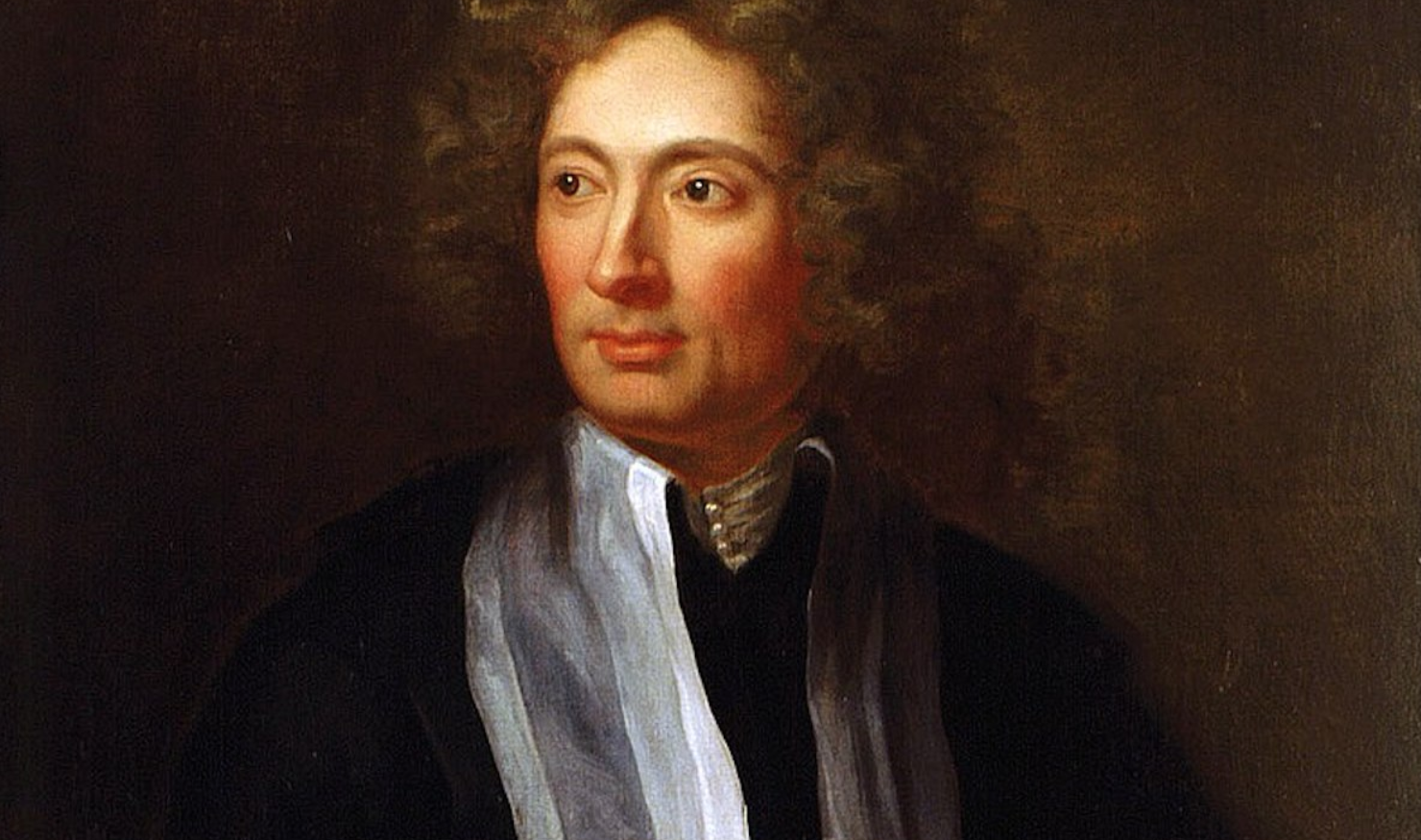Frederick the Great plays the flute with CPE Bach. Painting by Adolphe von Menzel
Arcangelo Corelli, portrait by Hugh Howard (1697)
Article | The art of ornamentation
Advice dating back to the court of Frederick the Great still stands for students of Historically Informed Performance.
Limelight Magazine by Sally Melhuish on 18 July, 2023. Article on Corelli’s Magic concert series, 18 and 20 August.
The two composers worked together for nearly 30 years in the Court of Frederick the Great and their opinion remains essential reading. As well as teaching how to play, their writings also instruct in what not to do – and they clearly express annoyance when directions are not respected.
For example, in Quantz’s On Playing the Flute (Berlin, 1752), the composer directed musicians to “improve, not disfigure” the music and stressed the importance of understanding the score:
“Almost no one who devotes himself to the study of music, particularly outside France, is content to perform only the essential graces; the majority feel moved to invent variations or extempore embellishments …”
“So many incorrect and awkward ideas appear that it would be better in many cases to play the melody as the composer has written it rather than spoiling it repeatedly with such wretched variations.”
CPE Bach took a pragmatic approach to ornamentation but was miffed when his talents as a composer were overshadowed by the performer:
“Nowadays, varied repeats are essential, being taken for granted from every performer … Often it is nothing but the variations, particularly when joined to prolonged and over-curiously ornamented cadenzas, which arouse the loudest applause from the audience. And what abuses of these two resources occur!” Sechs Sonaten fürs Clavier mit veränderten Reprisen (Berlin, 1760)
François Couperin implored performers to follow his instructions “to the letter” in his Preface to Pièces de Clavecin, Book III (Paris, 1722):
“I am always astonished, after the pains I have taken to indicate the appropriate ornaments for my pieces … to hear people who have learnt them without heeding my instructions. Such disregard is unpardonable …”
Singers, in particular, drew the ire of composers who felt their florid ornamentation and embellishment simply pandered to popular tastes. Once the epitome of solemn restraint, singers attempted ever more extravagant theatrics, to the delight of audiences. Domenico Corri (c. 1782) dismissed such exhibitionism as “those who could quaver most thought themselves the best singers”.
Italian writer Francesco Algarotti also remained unimpressed. In his Saggio sopra l’opera in musica of 1763 he wrote:
“For a hundred common-place rhapsodists … there is scarcely one who combines knowledge with taste, elegance with naturalness, and whose own discretion restrains whim. Let these few on whom Apollo smiles be permitted their own supplemental touches … But, for all the others, let the composer write down everything they are to do.”
One of the most significant composers of the Baroque period, Arcangelo Corelli (1653-1713), gave no such performance instructions, leaving it to contemporaries to write about his music.
Nearly 80 years after Corelli’s death, historian Charles Burney was still lauding the legendary composer: “… scarce a contemporary musical writer, historian, or poet neglected to celebrate [Corelli’s] genius and talents …” (1789).
The antiquarian Sir John Hawkins (1776) considered Corelli’s music “the language of nature … Men remembered and would refer to passages in it as to a classic author”.
Also eager to praise Corelli’s genius was Roger North, who wrote in 1726: “If music can be immortal, Corelly’s [sic] will be so.”
Corelli’s talents as a teacher, composer and performer attracted disciples, imitators and opportunists. His fame spread remarkably given his small but exquisite compositional output, which was all for strings: four sets of trio sonatas, one set of violin sonatas, and one set of concerti grossi (with the last of these sets published posthumously).
He was revered throughout Europe and inspired an extraordinary number of contemporaries (including those we consider the titans of baroque composition today – JS Bach, Vivaldi, Telemann and Handel) and generations of composers to follow.
Corelli’s admirers sought to protect his legacy from those seeking to capitalise on his success. The 1710 publication of Corelli’s Op. 5 Violin sonatas by the publisher Estienne Roger included the adagio movements in both the original and a version with ornaments “as [Corelli] plays them”.
Among those who were dubious about this claim was Roger North who commented: “Some presumer hath published [ornaments in…] Corelly’s solos. … Upon the bare view of the print any one would wonder how so much vermin could creep into the work of such a master”.
However, the boldness of the publisher’s marketing pitch paid off and the sonatas were republished dozens of times over the following century.
Although lacking verification, the ornamented adagios reveal an improvised style of playing a simple melodic line, leading Quantz to suggest in 1752 that “… cadenzas first came into use after the time Corelli published his twelve solos for the violin”. Ironically, as the Baroque age encouraged new styles and improvisation on the part of musicians, composers tried to keep a restraint on wild ornamentation and excessive flourish.
In doing so, composers have gifted us insight and understanding of their original intentions, allowing both performer and audience to uniquely experience Historically Informed Performances from facsimile scores and treatises.
Salut! Baroque presents Corelli’s Magic, 18 August, Albert Hall, Canberra and 20 August, Verbrugghen Hall, Sydney Conservatorium of Music.




